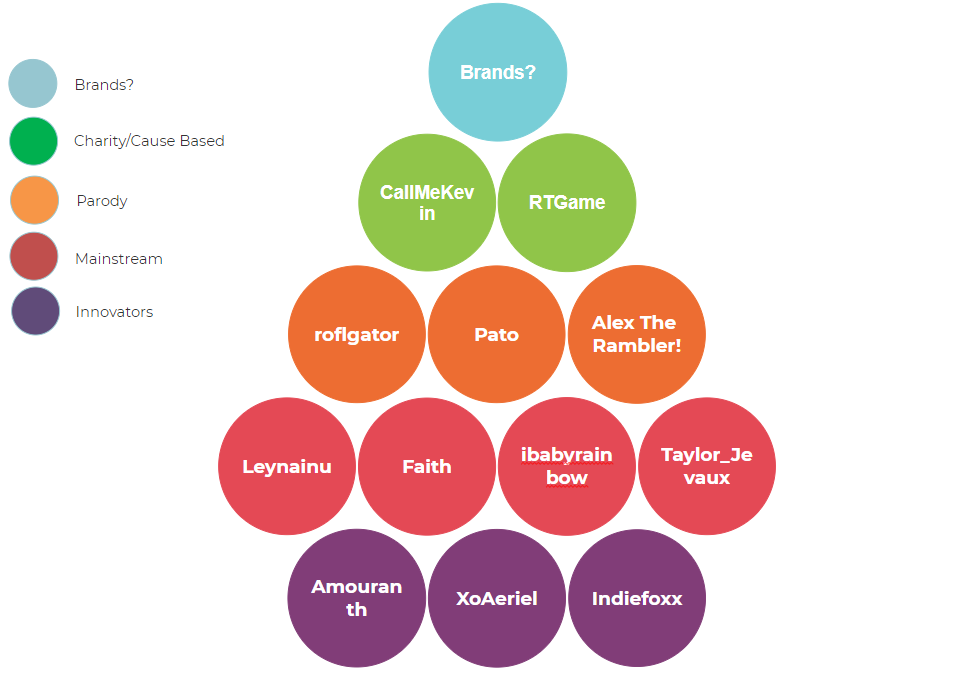Hot tubs, casinos, ASMR, and How to break Twitch in 80 days - The Influencer trend report
On the leading live streaming platform, Twitch, 2021 has seen the rapid growth of what has been curiously dubbed the 'Hot Tub Meta'. This has occurred alongside a notable increase in the number of streamers spending inordinate amounts of money on slots streams, a category on Twitch dedicated to people playing an online version of ‘slot’ machines - also known as fruit machines in the UK, where they are a mainstay of pubs across the country. The gambling machines have carefully calculated odds which are masked with clever ‘near misses’ and flashing lights, and always imply a big monetary win is just around the corner.
The rise of these two distinct content types has caused some to begin questioning the morality of Twitch as a platform. But perhaps more interestingly, it has also brought to light the fundamental paradox of Twitch as both a force for social cohesion and a place that thrives on subverting the social order for views.
Wait, what on earth is the Hot Tub Meta?
'The Hot Tub Meta' started with a loophole in Twitch's Terms of Service, that allows content creators to stream in a swimsuit or other swimming attire where it is contextually appropriate. This delicately allows streamers to bypass Twitch’s rule around ‘Sexually Suggestive Content’, previously used to hand ban streamers deemed to be engaging in ‘Fetishizing behavior or activity, such as focusing on body parts for sexual gratification’. The result of this is that when a streamer sits in an inflatable hot tub or other swimming pool whilst wearing a bathing suit, they fully comply with Twitch's Terms of Service under the contextual exception.
One potential spanner in the works for these channels is the rule around 'Sexually suggestive content'. So far Twitch has largely held back from taking action against involved channels, with only a select few having had advertising pulled. What can be observed with certainty is that a lowkey loophole was identified and creatively exploited, and that the close-knit culture of the Twitch community led to word of the opportunity spreading quickly.
With perceived sexuality at the centre of the controversy, many streamers have also provided commentary content. Videos by penguinz0 (1.3m Views), xQc (356k views) and Asmongold (466k views) have propelled the trend to new heights. Creators will always head to the source of views on Twitch and YouTube, and in the words of storied pro-wrestling promoter Eric Bischoff, “controversy creates cash”.
Realistically, the long term effects of the Hot Tub Meta will likely be limited. However, it makes a great test-case for studying the ways in which innovation can breed views from controversy.
[A bunch of expositional graphs and numbers are here]
What does the Hot Tub Meta tell us about the Twitch creator ecosystem?
The numbers involved in channel growth around the Hot Tub Meta exemplify similar patterns as observed in other Twitch trends. This an important takeaway, as it indicates that behaviour formerly seen in Twitch’s dominant gaming pillar remains relevant when you remove that vertical from the equation. Regardless of content type, there are certain universal truths to how Twitch works. Chief among the parallels here is the observation that there are two distinct wings of creators who approach Hot Tub streaming as part of the in-group.
Above: The presence of otters will be explained.
The first are established streamers using the trend as a way of ingratiating a new audience, gaining temporary additional traction from an expanded viewership that is intrigued by the overall concept but likely won't stick around. These streamers start from a higher established base viewership, and see increased numbers for the duration of the trend before returning to their pre-trend audience size.
The second are a group of aspiring creators managing to find a completely new audience through exploiting the trend, and using that breakout success to work their way up through the emerging and established creator tiers. Their expanded audience make-up could consist of existing viewers of established creators, mixed with new eyes attracted by the mainstream social attention the trend is enjoying.
What can brands learn from the Hot Tub Meta?
Whilst it is easy to observe the two distinct factions of creators benefiting from this trend, the most valuable insight for brands outside of Twitch is in the later evolution of the trend. As the Hot Tub Meta has grown and developed past its origins, it has become a meta-level search term and varied content pillar in its own right.
The above graphic demonstrates how the trend started with a core set of innovators, before evolving through parody, and then on to usage in tongue-in-cheek charity events, as the concept became more and more familiar across Twitch and the wider internet. The implication for brands is that if we can identify the small group of 'Innovators' within a new game or content category on Twitch, we can draw observations to understand what makes someone 'influential' over other creators and audiences.
Above: The evolution of participation in a Twitch trend, visualised.
Whenever a trend evolves to such a mass-awareness scale, it becomes ripe as a vehicle for reaching wider audiences with branded content. The controversial nature of this particular trend has, perhaps understandably, not been conducive to brands jumping straight in, but if it were something less volatile, many would likely see great benefit from being among the first wave of more mainstream voices to capitalise on the movement.
Though there is one brand who were savvy enough to exploit this trend to great effect. MarineMammalRescue, whose viewership is now up a staggering 1,000% in both average viewers and hours watched over 60 days. They were one of the first channels to stream in the category, placing a 24-hour camera on a Otter enclosure, using tongue in cheek titles like “🌶️ HOT 🔥 E-OTTERS PARTYING 🎈 IN ❄️🧊🥶 COLD TUB 💦”.
By poking fun at the controversial category, in a way that perfectly pastiches the platform’s tropes, MMR’s approach resonated beautifully with the Twitch audience, who’s relationship to brands is always predicated on them adding authentic value to the ecosystem. In this way, The Marine Mammal Rescue channel came out on top.
Elsewhere on Twitch, slot machines are beating out videogames
If Hot Tub streams represent a creative navigation of the Twitch Terms of Service, Slots streams perhaps signify something more problematic. The Slots category is punctuated by unusually high viewing numbers, with the average number of viewers per streamer sitting at 185.9. Compare this to the 24.7 enjoyed by videogame heavyweight Minecraft, and you can see the disparity.
The reason is as simple as you could imagine. Only the biggest streamers can afford to make this content. The cost of entry to online slots can be extremely high, and the cost to a high-performing Slots streamer may be anywhere from $50 and $200 per spin. A lifestyle like that that is only fundable on a prominent streamer's income.
Content creators quickly spending their wealth on online slots can be deemed problematic in itself, but when you begin to add children into the audience mix, the risks become higher. The audience age of xQc (the most high-profile Twitch streamer, with 40% more hours watched than any other personality on the platform over the last year), skews 31.4% under the age of 18. At any one time, he is liable to have between 30,000 and 40,000 children watching him spend an inordinate amount of money on fruit machines.
Slot streams, loot boxes, and gaming’s bigger gambling woes
And of course, this resonates with ongoing issues in the wider world of gaming. With potential government intervention incoming in regard to in-game monetisation via loot boxes, it’s easy to see how slots streams may soon come under fire. If all of the above conflates to form a wider outcry, it will be important to understand the kind of content that will be most affected, and the possible implications.
The Slots category has the potential to cause issues for Twitch, but more widely the first game likely to be deeply affected is FIFA, which currently sits at the platform’s number 14 position for watch-time, with 240 million hours. A large portion of the content made around the game focuses on 'pack openings', a form of in-game loot box gambling where people spin until they pull something desirable.
Everyone from Pokemon content creators, to World of Warcraft streamers, football fans, vintage fashion fans, scalpers and of course the Counter-Strike community have found dedicated audiences amongst content that cleverly masks gambling. So whilst you can legislate against it, it’s always likely that subversive substitutions will eventually come along to fill the void.
Two unusual trends, one perennial cause
So if those are the current trends shaping Twitch culture, why are they happening? As disparate as hot tubs and slot machines might seem as content categories, they’re closely tied in their origins. If we are to understand what has led to these trends developing into mainstream verticals, it's worth understanding Twitch (and more widely, gaming in general) as a reflection of transgressive youth culture.
'Transgressive' is defined as 'involving a violation of moral or social boundaries.'. However, in the literature, this has evolved to mean 'To violate or infringe limits set by law or convention'. The history of this is too deep to cover in this report, but a line can be drawn from early Mortal Kombat through to Grand Theft Auto and the moral panic around games like Manhunt. Retrospectively, it is clear how - at least during its formative years - gaming has taken to pushing the boundaries and norms of mainstream culture.
Above: The biggest controversy in pop culture. Once upon a time.
We can clearly observe this in games themselves, but moving a step further back we can also see the effects manifest in the culture of gameplay, through griefing, trolling, and - unfortunately in some circles - the online harassment which has become such a hallmark of online play that almost everyone reading this will recall at least one example.
Whilst many streamers go to extreme lengths to root out this abuse from their chats and expunge it from their communities, others encourage and revel in it. Including xQc, who has made a career from being controversial. See also Kaceytron, who, upon observation of her stream, one author noted 'Raunch and abuse are instead allowed, normalized, and then capitalized on as they become signature elements of the Kaceytron brand.'
The crucial paradox to all of this is that popular culture - in this instance Twitch - reinforces dominant social values and thus contributes to social cohesion. But it does this while simultaneously offering pleasures associated with resistance of - and even subversion of - social order. Popular culture and Twitch are both simultaneously conformist and transgressive in nature. They are a reflection of what is happening in youth culture, and also a real-time, measurable source of it.
Twitch as a platform will continue to have challenges with material that pulls into question the limits of its own rules and the morality of its streamers. The channels that carefully and cleverly ride that wave will continue to have a chance of blowing up, because the notion of transgressive play is inherently interesting to Twitch's target audience.
So where’s all this going?
In no uncertain terms, these particular trends will lead to changes to the Twitch platform. Two potential ways forwards include:
Sitewide bans on slot machine content and real money gambling
Age verification and tighter parental controls, with restrictions based on content category.
Both of these options come with their own issues to navigate. Firstly, what even is a ban on slot machines and gambling in a world where a randomised FIFA 'Rare Player Pack' can cost you £11 and have next to no tangible value? The UK Gambling Act Review closed its submissions for evidence on the matter of videogame loot boxes on April 1st, 2021. Expect to hear of big-picture changes on the release of that report.
Age verification would likely initially take the form of self-reporting, which in itself is a flawed system. Should such a notion gather more steam at an institutional level though, expect to see tighter controls on what children can view. Again, an imperfect system, but one that will likely take the heat off Twitch.
Addendum, 20th June 2021: Twitch streamers Amouranth and Indiefoxx have now been banned from Twitch for once again skirting the rules to create risque content in a new genre. Both were removed shortly after streams in which they wore tight clothing and simulated ASMR whilst licking microphones. Admittedly, both steered into the humour of the situation, with Amouranth dressing as a pigeon for her stream. Regardless, the bans imply that perhaps Twitch is ready to start taking tighter control over streamers who have historically exploited the rules for their own gain, in this case now using the ASMR category as another means to rationalise material Twitch categorises internally as sexually explicit.
With the move from the Hot Tub category of Twitch to the ASMR section, streamers are now heralding the start of the ASMR meta. But perhaps much more importantly, the Marine Mammal Rescue channel now sits top of its class in the Hot Tub section. An exemplary case of a brand using Twitch trends to extend its reach far outside of its target and local audience.






